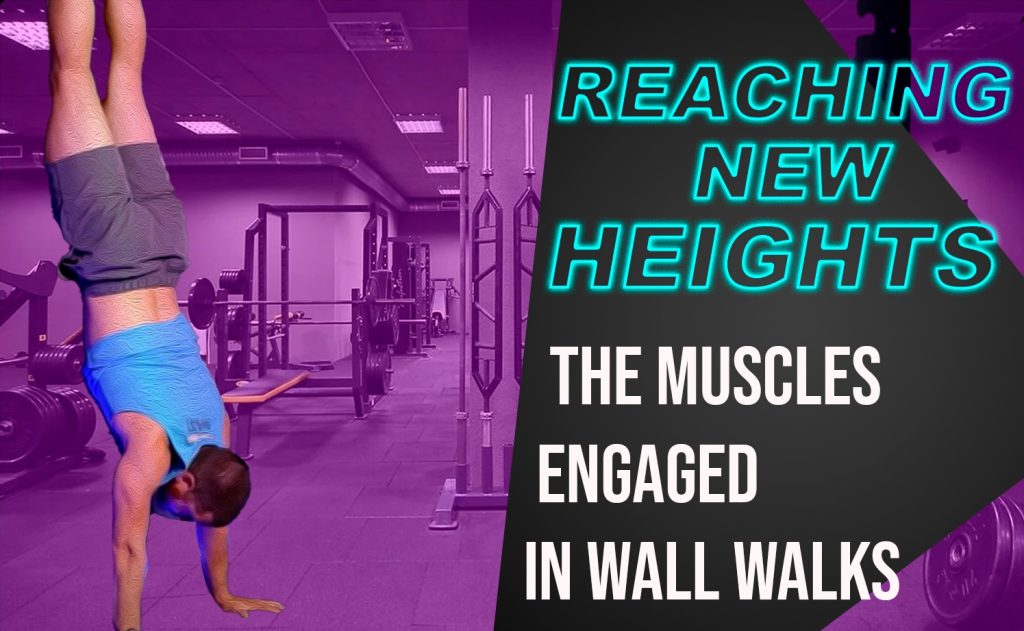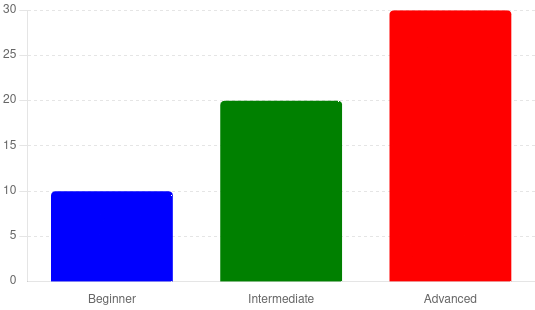Not just for show, wall walks offer real benefits like enhancing your upper body strength and improving your overall stability. By mastering this exercise, you can take your bodybuilding routine to new heights. Proper form and consistency are key to reaping these rewards. So, don’t be afraid to try wall walks and see the amazing results they can bring to your fitness world.
Introduction to Wall Walks
Wall walks are an exciting and challenging exercise that can take your workout routine to a whole new level. It involves putting your hands on the ground and walking up a wall, defying gravity and building incredible strength.
| Aspect | Explanation |
| Definition | Wall walks are a bodyweight exercise that involves walking the feet up a wall and the hands back towards the wall, until the body is in a handstand position. |
| Benefits | Benefits include improving shoulder strength, core stability, and balance. They also enhance body control and coordination. |
| Muscles Targeted | Primarily targets shoulders, core muscles, and arms. |
| How to Perform | Start in a push-up position with feet against the wall. Walk feet up the wall while simultaneously walking hands back towards the wall, maintaining a tight core and straight body. |
| Common Mistakes | Common mistakes include arching the back, not engaging the core, and placing hands too far from the wall. |
| Progressions | Progress by starting with partial wall walks, then increase the distance walked up the wall as strength improves. |
| Safety Tips | Ensure a safe environment, keep core engaged, and avoid sudden movements to prevent injury. |
This exercise primarily targets your upper body, including your shoulders, arms, and upper back. It also engages your core muscles and improves your stability and balance. By incorporating wall walks into your fitness regimen, you’ll not only achieve a stronger and more toned physique, but you’ll also enhance your overall functional fitness.
Wall walks are a versatile exercise that can be modified to suit your fitness level. Whether you’re a beginner or an experienced athlete, this workout can be scaled up or down to challenge you appropriately.
Unlocking the Benefits of Wall Walks
From increased upper body strength and muscle development to improved core stability and balance, and enhanced shoulder flexibility and mobility, wall walks deliver a total-body workout that goes beyond the realm of traditional exercises.
Increased Upper Body Strength and Muscle Development
Engaging in wall walks as part of your bodybuilding routine can lead to remarkable gains in upper body strength and muscle development.
This exercise demands substantial effort from your arms, shoulders, and chest as you push yourself up the wall. The constant resistance against gravity helps to activate and strengthen the muscles in these areas.
As you consistently perform wall walks with proper form, you’ll gradually notice increased muscle definition and strength in your upper body.
Improved Core Stability and Balance
Another unique benefit of wall walks is the improvement in core stability and balance. Throughout the exercise, your core muscles play a crucial role in controlling your body and maintaining stability.
As you walk your hands up the wall, your core engages to keep your body aligned and prevent it from tipping over. Over time, this leads to strengthened core muscles and enhanced overall stability, which is essential for both bodybuilding and daily activities.
Enhanced Shoulder Flexibility and Mobility
Wall walks require a great deal of shoulder flexibility and mobility. By gradually increasing your range of motion during this exercise, you’ll see notable improvements in your shoulder joints.
As you reach higher up the wall, you’ll be stretching and strengthening the muscles and tendons in your shoulders. This not only enhances your athletic performance but also reduces the risk of injuries, as flexible and mobile shoulder joints are less prone to strains or impingements.
Benefits for Functional Fitness and CrossFit Enthusiasts
Crossfit Wall walks provide additional advantages for functional fitness and CrossFit enthusiasts. The exercise simulates movements that mimic real-life situations, such as climbing or pushing yourself up from the ground.
These functional movements can improve your overall performance in daily activities. Additionally, wall walks crossfit are commonly incorporated into WODs, contributing to a well-rounded fitness regimen. The combination of strength, stability, flexibility, and balance that wall walks offer make them a valuable exercise for those seeking to excel in functional fitness and CrossFit-style training.
Wall walks enhance balance through several mechanisms:
- Proprioception Improvement:
- Wall walks require awareness of body position in space, helping to develop proprioception. This heightened sense of body position and movement is crucial for balance.
- Core Strengthening:
- Maintaining a stable core is essential during wall walks. Strengthening the core muscles helps stabilize the body, which is vital for balance.
- Shoulder and Arm Stability:
- The shoulders and arms play a significant role in maintaining balance during wall walks. Strengthening these muscles helps improve overall body stability.
- Coordination and Body Control:
- Wall walks require coordinated movements between the hands and feet. Enhancing coordination and control contributes to better balance.
- Dynamic Equilibrium:
- Wall walks challenge the body’s ability to maintain equilibrium while in motion. Practicing this exercise improves the body’s dynamic balance.
- Engaging Multiple Muscle Groups:
- Engaging various muscle groups simultaneously improves neuromuscular coordination, which is essential for maintaining balance in different positions and movements.
By regularly practicing wall walks, individuals can develop these aspects, leading to enhanced overall balance.
How to Perform Wall Walks
In this detailed breakdown, we will go through four steps that will guide you in executing wall walks crossfit correctly. By following these steps, you’ll learn how to perform this exercise effectively and safely, allowing you to reap the full benefits it offers.
Step 1: Warm-up and Preparation
Before starting wall walks crossfit, it’s crucial to warm up your body to prevent injuries. Begin with a dynamic warm-up that includes arm circles, shoulder rolls, and wrist rotations to loosen up your upper body.
Engage your core muscles with exercises like planks and hollow holds to ensure stability during the movement. Additionally, incorporate shoulder mobility exercises such as arm swings and stretches to increase your range of motion.
Step 2: Starting Position
Assume a planking position wherein your feet is touching the wall. Place your hands on the ground, slightly wider than shoulder-width apart.
Maintaining a straight line from head to heels, take a deep breath and approach the wall calmly and with determination.
Step 3: Walking Up the Wall
Now, it’s time to initiate your climb.
- Begin by slowly walking your feet up the wall while simultaneously walking your hands toward the wall.
- Take deliberate steps, focusing on transferring your weight onto your hands as you ascend.
- Maintain control and precision throughout the movement, keeping your core engaged and your shoulders stable.
- Continue until your feet are nearly parallel to the ground, conquering the wall with each calculated step.
Step 4: Descending with Control
To descend from your wall climb, reverse the movement by walking your hands back away from the wall while simultaneously walking your feet down.
- Maintain core engagement and control your descent, ensuring a smooth return to the starting position.
- Take a moment to rest before reflecting on your progress and, if desired, repeating the exercise to improve.
Maintaining Proper Form and Technique during Wall Climbs
Wall climbs crossfit can be a challenging but rewarding exercise that requires practice, determination, and proper technique. In this guide, we’ll give you some tips on how to master your form and maintain proper technique during your wall climb journey.
Tip 1: Keep Your Core Engaged
To maintain stability and control while performing wall climbs, it’s essential to engage your core muscles.
- A strong and engaged core helps you keep proper form, preventing any unwanted wobbling or arching in the back.
- Before initiating your climb, activate your core muscles by performing exercises like planks and hollow holds.
Tip 2: Focus on Your Breathing
Breathing is essential in any exercise, and wall climbs are no different.
- It’s important to take deep breaths and exhale slowly throughout the movement.
- Inhaling as you walk your feet up the wall.
- Exhaling as you walk down helps regulate your breath, regulating your body’s oxygen supply and reducing tension build-up in the neck and shoulders.
Tip 3: Maintain Proper Hand Positioning
Throughout the wall climb exercise, it’s crucial to maintain proper hand positioning to ensure a successful climb.
- Before beginning your climb, place your hands slightly wider than shoulder-width.
- As you climb, keep your palms flat on the ground, utilizing your fingertips to provide additional support.
- Make sure your fingers are pointing straight ahead, so that your elbows don’t flare outwards, which may put unnecessary strain on the shoulders.
Tip 4: Gradually Increase Difficulty
As you become more comfortable performing wall climbs, it’s essential to continue challenging yourself and improving your technique.
- Gradually increasing the difficulty level by elevating your feet or decreasing the distance between your hands and feet is a great way to progress.
- However, always make sure to maintain proper form and technique, even as you increase the difficulty level.
Progression to Doing Wall Walks
Crossfit Wall walks are a challenging yet rewarding exercise that engages multiple muscle groups and boosts both strength and coordination. But how do you progress from beginner to mastering this impressive move?
Step 1: Mastering the Basics
Before you start conquering wall walks crossfit, it’s crucial to develop a strong foundation. Begin with exercises that focus on core stability and shoulder strength, such as planks, push-ups, and shoulder presses. Strengthening these key areas will prepare your body for the unique demands of wall walks.
Step 2: Incline Wall Walks
Once your foundational strength is adequate, it’s time to start practicing wall walks at an incline. Find a sturdy surface, such as a high bench or box, and position yourself with your hands on the ground and your feet against the incline. Walk your hands up the incline while simultaneously stepping your feet up. Take it slow and concentrate on maintaining proper form and control. As you become more comfortable, gradually increase the incline to challenge yourself further.
Step 3: Wall Walk Progressions
Now that you’ve mastered incline wall walks exercise, it’s time to transition to the full upright version. Begin with your hands on the ground and your feet against the wall. Walk your hands up the wall while keeping your core engaged and your body in a straight line. As you walk your hands up, take small steps with your feet, allowing them to gradually move up the wall. As you progress, aim to walk further up the wall until you can achieve a near-vertical position.
Step 4: Refining Technique and Increasing Difficulty
Once you can confidently perform wall walks against a vertical wall, focus on refining your technique. Ensure your body remains straight and engaged throughout the movement, with your core and shoulders doing the work. If you want an extra challenge, try incorporating variations, such as lateral wall walks or single-arm wall walks. These variations will further test your strength and stability.

Reaching New Heights – The Muscles Engaged in Wall Walks
Wall walks are a full-body exercise that target multiple muscle groups, making them an efficient way to build strength, stability, and stamina. Let’s break down the specific muscles that come into play while performing wall walks, helping you appreciate the complexity of this challenging exercise.
Emphasizing the Importance of Engaging the Core, Shoulders, Arms, and Upper Back
Engaging the core is crucial when performing wall walks exercise as it provides stability and support for the spine.
- The rectus abdominis, transverse abdominis, and obliques make up the core muscles that come into play when climbing and descending, ensuring that the body remains stable and aligned.
- The shoulders are also crucial in wall walks exercise, as they help support the arms and provide stability while ascending or descending.
- The deltoids are the primary shoulder muscles used, along with the trapezius and rhomboids of the upper back, which also assist in maintaining proper form and technique.
- The biceps, triceps, and forearms are the primary arm muscles used, all working together to maintain grip and provide support, especially during the initial push off the ground.
Highlighting Secondary Muscles Involved in Maintaining Balance and Stability
In addition to the primary muscle groups mentioned above, several other supporting muscles help maintain balance and stability during wall walks exercise.
- The glutes help keep the pelvis stable while the leg muscles provide support for the feet and ankles.
- The quadriceps, hamstrings, and calves work together to support the body’s weight while ascending or descending the wall.
- The back muscles, including the erector spinae and lats, also provide a solid foundation for the upper body to work from, allowing for smooth, controlled movement.
Up the Wall, Not into a Roadblock – Common Pitfalls During Wall Walks
However, many people unknowingly make mistakes that can hinder their progress and lead to injuries. Identifying some common errors made during wall walks and knowing the valuable tips on how to correct them while maintaining proper form while be essential. By learning from these mistakes and implementing our advice, you can make the most out of your wall walk workout.
Mistake #1: Arching the Lower Back excessively
One frequently seen mistake during wall walks is allowing the lower back to arch excessively. When this happens, it puts unnecessary strain on your lower back, leading to discomfort or potential injuries.
- To correct this, focus on engaging your core muscles. By tightening your abdominal muscles and imagining your belly button pulling towards your spine, you can create stability and maintain the natural curvature of your spine.
- Remember, a strong and stable core is vital in supporting your back during wall walks.
Mistake #2: Rushing Through the Exercise without Control
Another common mistake is rushing through the exercise without maintaining control. Some people tend to speed up their movements, especially during the ascent and descent. This lack of control not only diminishes the effectiveness of the exercise but also increases the risk of injuries.
- To avoid this pitfall, practice moving slowly and deliberately.
- Take your time as you climb up and lower yourself down the wall. By doing so, you allow yourself to maintain proper form, engage more muscles, and decrease the chance of accidents.
- Remember, slow and steady wins the wall walk!
Mistake #3: Incorrect Hand Placement
One mistake that affects stability and balance during wall walks is incorrect hand placement. Placing your hands too close together or too far apart can throw off your balance, making it harder to maintain proper form.
- To find the optimal hand position, ensure your hands are slightly wider than shoulder-width apart, with your fingers pointing towards the wall. This position provides the necessary stability and leverage for your climb.
- By placing your hands correctly, you can improve your grip, control, and overall performance during wall walks.
Mistake #4: Neglecting Core Engagement and Shoulder Stability
Engaging your core and maintaining shoulder stability are often overlooked but crucial aspects of wall walks. Neglecting them can lead to instability, poor form, and potential injuries.
- To address this issue, concentrate on activating your core muscles before you begin the climb. Exercises such as planks and hollow holds can help strengthen your core and enhance stability. Additionally, pay attention to your shoulder position.
- Aim to keep your shoulder blades down and back, rather than shrugging them up towards your ears. This helps maintain proper alignment and reduces strain on your shoulder joints.
Highlighting the Potential Risks and Injuries Associated with Improper Techniques
Performing wall walks with improper form not only decreases the effectiveness of the exercise but also increases the risk of injury.
- Excessive lower back arching can lead to strain on the lumbar spine, resulting in discomfort or even more severe issues.
- Poorly controlled movements can cause falls, leading to sprains, strains, or fractures.
- Neglecting core engagement and shoulder stability can result in overuse injuries or shoulder pain.
Adding Wall Walks to Your Workout Routine
Revamping your exercise routine and trying new challenges can bring excitement and progress to your fitness journey. Introducing wall walks exercise to your regimen can be a fantastic way to level up your workouts and target multiple muscle groups simultaneously.
The Best Ways to Integrate Wall Walks: Finding the Right Frequency
Finding the right frequency for wall walks depends on your fitness level and overall goals.
- If you are a beginner or new to wall walks, starting with two to three sessions per week can be a sensible approach. This frequency allows your body to adapt and recover adequately between workouts.
- As you progress and build more strength and confidence, consider increasing the frequency to three to four times per week. This will provide you with more opportunities to refine your technique and challenge yourself further.
Duration Recommendations: From Beginner to Advanced

- For beginners, starting with shorter durations is recommended to gradually acclimate to the exercise. Aim for sets of 3 to 5 crossfit wall walks, each lasting about 10 to 15 seconds.
- As you become more comfortable, gradually increase the time spent on each wall walk. Progress to 20 to 30 seconds per crossfit wall walk, aiming for sets of 5 to 8 repetitions. This allows you to build endurance and strength while maintaining proper form.
- Advanced individuals can increase the duration of their crossfit wall walks. Aim for sets of 8 to 10 repetitions lasting 30 to 45 seconds each. By pushing the duration, you challenge your muscles and cardiovascular system to a greater extent.
Progressing Safely and Effectively
When incorporating wall walks into your exercise routine, it’s crucial to listen to your body and progress at a pace that is appropriate for you.
- Gradually increase the frequency, duration, or both as you become more comfortable and proficient.
- Always prioritize proper form and technique over intensity, as maintaining correct alignment and engaging the appropriate muscles are paramount for safe and effective wall walks.
Sample Workout Routines Incorporating Wall Walks
To help you incorporate wall walks into your workout routine, we have prepared two sample workout plans: one for beginners and one for advanced individuals. These routines are designed to provide a balanced full-body workout while incorporating the benefits of wall walks.
Beginner Workout Routine:
- Warm-up: 5-10 minutes of light cardio (e.g., jogging, brisk walking) followed by dynamic stretches targeting major muscle groups.
- Wall Walks: Perform 3 sets of 5-8 wall walks, focusing on maintaining proper form and controlling your movements. Rest for 30-60 seconds between each set.
- Alternating Lunges: Complete 3 sets of 10-12 reps on each leg. Rest for 30 seconds between sets.
- Push-ups: Perform 3 sets of 8-10 reps, either on your toes or knees. Rest for 30 seconds between sets.
- Plank: Hold a forearm plank for 30-45 seconds. Rest for 30 seconds and repeat for a total of 3 sets.
- Bodyweight Squats: Complete 3 sets of 12-15 reps. Rest for 30 seconds between sets.
- Mountain Climbers: Perform 3 sets of 12-15 reps on each leg. Rest for 30 seconds between sets.
- Cooling Down: Stretch major muscle groups for 5-10 minutes, focusing on the muscles worked during the workout.
Advanced Workout Routine:
- Warm-up: 5-10 minutes of light cardio (e.g., jogging, jumping jacks) followed by dynamic stretches targeting major muscle groups.
- Wall Walks: Perform 4 sets of 8-10 wall walks, focusing on controlled movements and maintaining proper form. Rest for 30-60 seconds between each set.
- Pull-ups: Complete 3 sets of 6-8 reps. Rest for 60 seconds between sets.
- Bulgarian Split Squats: Perform 3 sets of 8-10 reps on each leg. Rest for 45 seconds between sets.
- Handstand Push-ups (or modified pike push-ups): Perform 3 sets of 6-8 reps. Rest for 60 seconds between sets.
- Russian Twists: Complete 3 sets of 12-15 reps on each side. Rest for 30 seconds between sets.
- Flutter Kicks: Perform 3 sets of 20-30 seconds. Rest for 30 seconds between sets.
- Cooling Down: Stretch major muscle groups for 5-10 minutes, focusing on the muscles worked during the workout.
Walk your Way up with Wall Walks!
In conclusion, wall walks are a challenging yet rewarding exercise that can significantly improve your strength, stability, and overall fitness levels. Incorporating them into your workout routine can provide a full-body workout that engages multiple muscle groups simultaneously. By progressing from incline wall walks to the full vertical version, you’ll not only reap the physical benefits but also feel a sense of accomplishment from mastering this impressive move.
Whether you’re a bodybuilder or a fitness enthusiast, the appeal of wall walks lies in its ability to challenge you both mentally and physically. By setting goals and gradually progressing from one level to the next, you can experience steady improvements in your form and technique. And the best part? The benefits of wall walks extend beyond the workout, helping to improve your posture, confidence, and overall well-being.
So, we encourage you to give crossfit wall walks a try and start reaping the benefits. Remember, it’s all about progression, so take it slow, listen to your body, and celebrate your achievements. Here’s to mastering the wall walk and taking your fitness to the next level!



